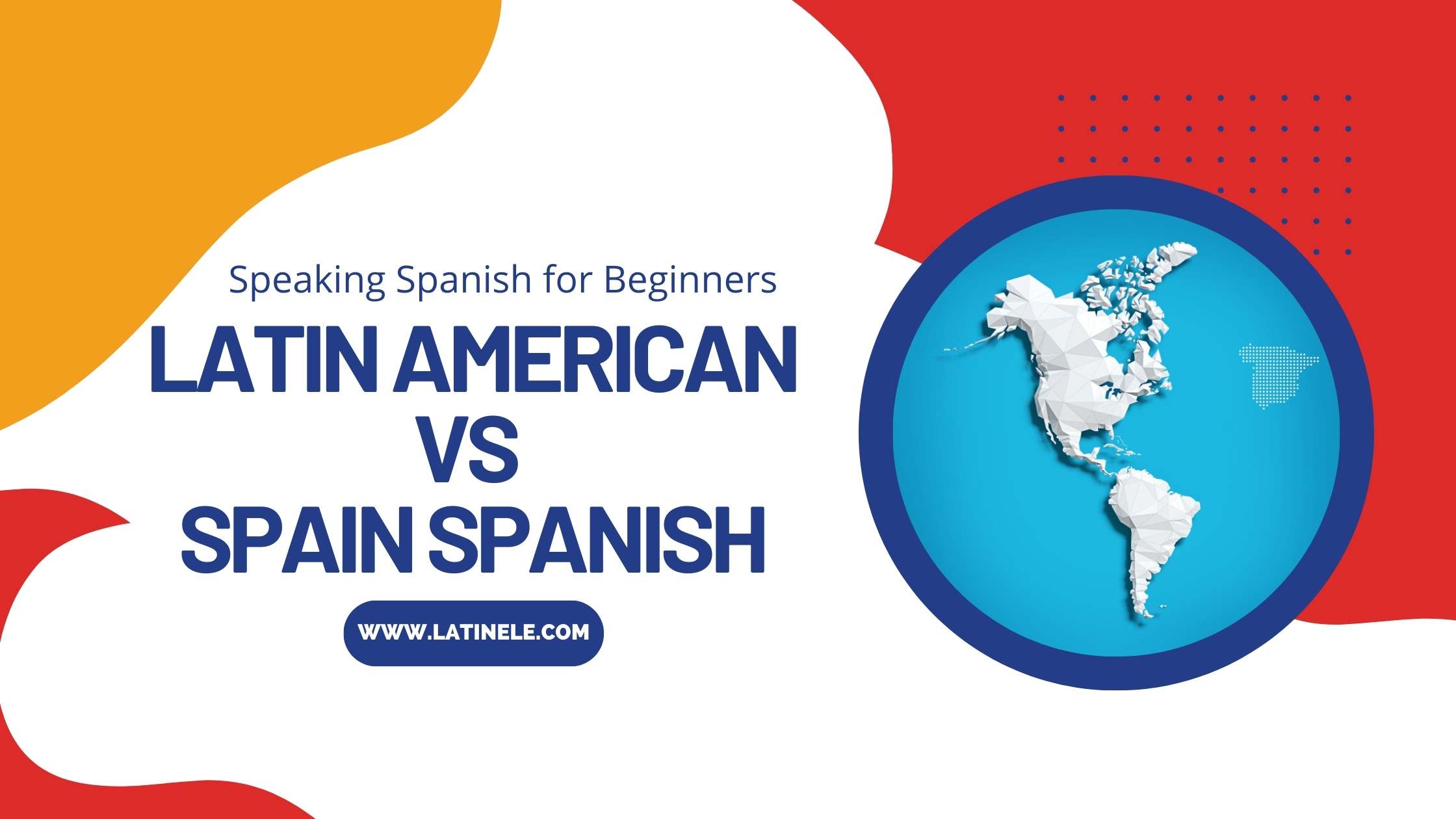European or Latin American Spanish? That’s the question many Spanish learners ask when they start learning the language.
The quickest answer is that the grammar rules are pretty much the same, but you’ll find most differences at the lexical and pronunciation level.
It’s difficult to give a “black or white” answer. Even when talking about “Latin American Spanish”, there are differences from one country to another, and even within the same country!
However, it’s undeniable that Latin American Spanish has a lot more in common with each other than with Spain.
Knowing these differences can even have a commercial impact. For example, did you know that movies are dubbed in both Latin American Spanish and Spain Spanish versions?
You can do a quick experiment: ask your Latino friends what they think about movies dubbed in European Spanish. I’m sure most of the answers will be “they feel weird”.
Keeping all that in mind, in this episode of Speaking Spanish for Beginners, we’ll cover three main differences between the two regions so you can gain a deeper knowledge of this beautiful language.
¡Vamos!
Get Our FREE Ebook “Spanish Adventures Companion”
Become a subscriber to the Latin ELE Newsletter and get our ebook and premium podcast, “Spanish Adventures Companion.”
A great resource to help you navigate common travel scenarios “en español.”
Unsubscribe anytime. No hard feelings.

The pronoun vosotros
If you’ve been studying Spanish for some time, you’ve probably seen this one a lot. “Vosotros” is the plural form of “you”.
Example:
Vosotros tenéis que estudiar español cada día. (You have to study Spanish every day).
However, did you know that it is only used in conversations in Spain? That’s right – Latin American native Spanish speakers don’t use it in their daily interactions.
Why, then, is it so present in textbooks? Well, as of the writing of this article, most of the material to teach Spanish is still produced in Spain, where only about 8% of the total population of native Spanish speakers live.
So what is used in Latin America instead? We use the pronoun “ustedes”. That’s why the sentence above in Latin America would be:
Ustedes tienen que estudiar español cada día.
“Ustedes” is also used in Spain for formal situations (with “vosotros” used in informal ones), but Latin Americans don’t make that distinction.
This is important to note because “ustedes” has different conjugations than “vosotros”. So if you’re learning Latin American Spanish, you have one less pronoun to worry about.
Pronunciation of s, c and z
Spanish in Spain differentiates between the sound of “s” (which is pronounced as a regular “s”) and the sound of “z” and “c” (which are pronounced with a “th” sound). This is the reason you would normally hear the word “cerveza” pronounced as /thehr-beh-thah/ in Spain.
However, in Latin American countries, all of these sounds are pronounced as “s” (a phenomenon known as ‘seseo’). That’s why “cerveza” is usually pronounced as /sehr-beh-sah/ in Latin America.
It’s worth noting that the differentiation between “s,” “c,” and “z” is not uniform across all parts of Spain either. In the southern part of the country, for instance, you will hear the ‘seseo’ as well. In fact, many settlers who came to Latinoamérica originated from southern Spain, which is why we share many traits with them.
Be Careful with “coger” (Lexical Differences)
Vocabulary differences are abundant between the two regions, with words that might change in meaning depending on where you use them.
One interesting example is the verb “coger.” In Spain, it is commonly used to mean “pick up something or somebody,” “catch somebody,” “carry,” and so on.
Examples:
- No cojo el teléfono los fines de semana. (I don’t pick up the phone on weekends.)
- La policía cogió a los ladrones. (The police caught the thieves.)
However, in many countries in Latin America, “coger” is a vulgar word used to refer to having sex.
So, “La policía cogió a los ladrones” gets a completely different connotation in some parts of Latin America. Imagine saying that to Latin American Spanish speakers!
To be clear, many people in Latin America would still understand what you mean, but your latino friends might laugh at first. It’s an opportunity for some lighthearted bonding.
I hope this episode has helped you understand some key differences between Castilian and Latin American Spanish. As we said earlier, the topic of dialects of Spanish is a little bit more complex than this. But this episode can you give a general overview of some of the key differences between Spanish spoken in Latin America and Europe.
If you like our Speaking Spanish for Beginners podcast, please give it a five star review and recommend it to your friends.
And If you want to receive weekly updates with more great content to learn Spanish, make sure to subscribe to Latin ELE’s newsletter.
¡Hasta la próxima!





 Peru is full of wonders beyond Machu Picchu! In this episode of Basic Spanish Conversations Podcast (Upper-Beginner Spanish), we
Peru is full of wonders beyond Machu Picchu! In this episode of Basic Spanish Conversations Podcast (Upper-Beginner Spanish), we